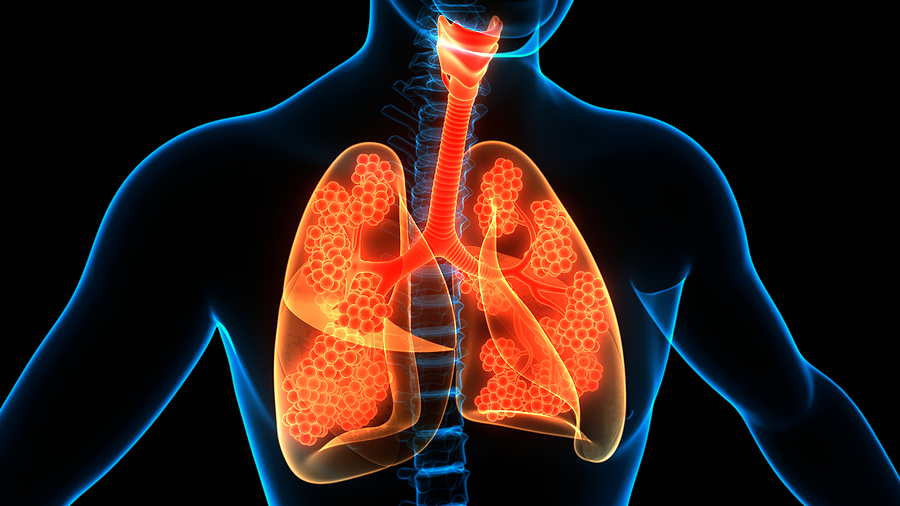Who Should Complete the Online Private Physician Forms?

Are you a 9/11 first responder, clean-up worker, or downtown resident, worker or student who is now suffering from illnesses related to toxic exposure at the attack site? Did you lose a loved one to a 9/11-related illness before they had a chance to obtain compensation and medical benefits for their illness?
For individuals who were sickened (including many cancers) by their exposure to toxic materials in connection with the 9/11 attack and the aftermath of the air that was toxic for close to a year afterwards, the process of obtaining compensation from the September 11th Victim Compensation Fund (VCF) involves having a cancer or other condition certified s 9/11 related by the World Trade Center (WTC) Health Program. Certifications typically happen after an exam at a designated WTC Health Program facility in New York City or affiliated clinics around the country.
However, some individuals eligible for VCF benefits cannot undergo the typical certification process at a WTC Health Program provider, for a variety of reasons including the physical inability to go to a WTC clinic or participating physician or the claimant passed away before the WTC Health Program was created or the VCF reopened in 2011. If that’s you, then you may instead follow a private physician process to obtain consideration of a 9/11-eligible condition. Read on for more information about this process—and don’t hesitate to call a September 11 lawyer for help.
What Is the Private Physician Process?
The private physician process is a method for confirming the existence of a 9/11-related health condition, which can be used by individuals seeking benefits from the VCF as an alternative to obtaining certification from the WTC Health Program. The private physician process involves obtaining an evaluation of a medical condition from a private physician, who then submits documentation—or makes documentation available for the claimant to submit—directly to the VCF for determination of a benefits claim.
Who Should Complete the Online Private Physician Forms?
The private physician process is not available to every VCF claimant.
People who should complete the online private physician forms include:
- Those who received instructions from the VCF to complete the forms.
- Those who are filing a claim for a deceased individual who was not certified for treatment by the WTC Health Program for the claimed condition before death.
- Foreign residents, living abroad, who have not been certified by the WTC Health Program for an eligible condition.
- Those who were previously eligible for compensation from the VCF based on a certified medical condition or are filing for a deceased person who were deemed eligible based on the certification of their 9/11-related medical condition, and are now seeking to add a non-certified cancer as a claimed condition.
- You were present at the Pentagon on September 11, 2001, but not as a responder. Because you were not a responder, you do not qualify to have your conditions certified by the WTC Health Program.
- You cannot go to a designated WTC Health Program provider to have your condition evaluated and certified for treatment, without suffering hardship. If you want to complete the private physician process to receive compensation, you must include a statement with your claim that explains the circumstances in which seeking a WTC Health Program would constitute a hardship, and you must also call the VCF helpline to let them know you have submitted the request.
Do not fill out the private physician process forms unless you meet one of the above criteria.
The Steps to Filing Your Claim Using the Private Physician Process
Once you have determined that you meet the criteria for the private physician process, you should follow the steps below to file your claim.
- Read over the private physician process packet to understand completely the type of information you will need to submit with your claim.
- Complete the private physician packet or ask your medical care provider to do so. Make sure you are using the appropriate packet for your type of claim; there is a packet for individuals at Ground Zero in Manhattan, another packet for claimants who were at the Pentagon, and a third for claimants who were at the Shanksville, PA site.
- Review—or have your physician review—the specific diagnostic information that is used to determine if your condition is eligible for compensation from the VCF. Ensure that all the diagnostic tests that must be performed for certification have been completed.
- Complete the 2-page Treating Physician Information form for all the physicians who treat your eligible condition, or have your physician fill out the form. Required information includes the conditions for which the individual receives treatment, and the year in which the earliest symptom of that condition first appeared. Note: If you fill out the form, be sure to tell your physician when you submitted it to the VCF.
- Complete an Authorization for Medical Release form for each physician named in a Treating Physician Information form. You should provide one original version to the physician and submit a second original version to the VCF. The form authorizes the physician to speak with the VCF about your medical condition.
- Gather all completed forms and relevant records. Your name, as the claimant, should be written on the first page of each document, along with your VCF claim number.
- Complete the Cover Sheet for Return of Completed Private Physician Forms and either upload them to the online claims area or mail them to September 11th Victims’ Compensation Fund, PO Box 34500, Washington, DC 20043. For overnight deliveries, mail your packet to September 11th Victims’ Compensation Fund, 1220 L Street NW, Suite 100 – Box 408, Washington, DC 20005-4018.
The Diagnostic Criteria Used to Consider a Condition
To obtain compensation through the VCF by way of the private physician process, the physician providing your care must perform the specific tests used by the VCF to evaluate the condition. The WTC Health Program has issued guidelines of the minimum diagnostic procedures necessary for many of the common ailments suffered by eligible VCF claimants.
Those guidelines include:
- For interstitial lung disease, the tests required include a patient history and physical exam findings; PFTs/ spirometry; and radiographic/ imaging evidence for lung findings (this evidence is directly used for determination of an eligible condition).
- For obstructive airways disease, excluding asthma and reactive airways disease, your treating physician(s) will need to perform diagnostic testing that includes history and physical exam findings and/or PFTs/ spirometry (which will be used for determination); and radiographic imagery, which is required to support a diagnosis of bronchiectasis. To determine eligibility in cases involving WTC-exacerbated chronic obstructive pulmonary disease (COPD), there must be evidence that the condition was present before 9/11 and worsened after exposure.
- For asthma and reactive airway diseases, the diagnostic tests that need to be performed and reported with the private physician process packet include history and physical exam findings and/or PFTs/ spirometry.
- For upper airway inflammatory disorders, patient history and physical exam findings must support the diagnosis, as well as supporting evidence provided by radiographic imaging, including a CT of the sinuses.
- For gastroesophageal reflux disorder, the required diagnostic testing includes medical history and physical exam findings and/or documented response to therapy and/or endoscopic evidence of esophagitis, stricture, or Barrett’s metaplasia.
- For sleep apnea, eligibility consideration depends on the submission of diagnostic tests that include history and physical exam findings, interpretation of a polysomnogram, or sleep study performed by a sleep specialist or pulmonologist that shows evidence of obstructive sleep apnea.
- For musculoskeletal disorders, the private physician process must include the submission of a medical history and physical exam findings, radiographic imaging evidence and/or electrodiagnostic testing, such as electromyography and Nerve Conduction Velocity study.
- For malignant neoplasms, the documentation needed for VCF consideration of the condition, you must submit evidence of history and physical exam findings, radiographic/imaging evidence, chemistry laboratory results, and a tissue biopsy or pathology report. Note: Not all neoplasms require a tissue biopsy.
- For in-situ malignant neoplasms, general evidence must be submitted. All in-situ malignant neoplasms are eligible for certification except lobular carcinoma of the breast, in-situ carcinoma of the gallbladder, colorectal adenomatous polyp with an area of in-situ carcinoma, and in-situ carcinoma of the cervix.
- For malignant neoplasms with an unknown primary, a diagnostic workup summary is required to demonstrate that an appropriate search for a primary malignancy was done. If a primary site is revealed through this workup, the neoplasm should be classified with the primary site. The medical determination should only discuss the final diagnosis and the date that the diagnosis was given.
Note: PFTs are Pulmonary Function Tests, which are a non-invasive method of determining how well your lungs are working. One of the methods for determining your lung function is through the use of a spirometer, which is a device with a mouthpiece that is hooked up to an electronic machine.
The test measures:
- Tidal volume, which is the amount of air you inhale and exhale during normal breathing.
- Minute volume, which is the total amount of air exhaled per minute.
- Vital capacity, which is the total volume of air that can be exhaled after inhaling as much as you can.
- Functional residual capacity, which is the amount of air remaining in the lungs after you have exhaled normally.
- Residual volume, which is the amount of air remaining in the lungs after you have exhaled as much as you can.
- Total lung capacity, which is the total volume of the lungs when filled with as much air as possible.
- Forced vital capacity, which is the amount of air exhaled forcefully after inhaling as quickly as you can.
- Forced expiratory volume, which is the amount of air expired during the first three seconds of the forced vital capacity test.
- Forced expiratory flow, which is the average rate of flow during the middle half of the forced vital capacity test.
- Peak expiratory flow rate, which is the fastest rate you can force air out of your lungs.
About the VCF and the WTC Health Program
The September 11th Victims’ Compensation Fund and the World Trade Center Health Program are two federal benefits programs that were created after the terrorist attacks of September 11, 2001, in Lower Manhattan, the Pentagon, and the site of the downed aircraft in Shanksville, PA.
In 2011, the Zadroga Act authorized funding for these programs with expanded eligibility criteria and new filing deadlines. In 2019, funding for these programs was reauthorized through 2090, ensuring that anyone who was affected by the 9/11-related toxic exposure who has not yet been diagnosed with an eligible condition will have the option of obtaining these benefits if that diagnosis does occur at a later date.
Many of the conditions compensated through the VCF are cancers that take years or even decades to develop.
- The WTC Health Program provides medical care and health monitoring for individuals exposed to the toxins at these sites. The program also provides the VCF with information on the certification of conditions for compensatory consideration.
- The VCF provides compensation for wage loss, wrongful death, and the pain and suffering that has been experienced by many first responders, cleanup workers, and other survivors who were at these sites on the day of the attacks as well as in the months following.
How Hansen & Rosasco Can Help With Your Private Physician Process
Hansen & Rosasco is devoted to helping 9/11 survivors, workers, and responders to obtain the federal benefits that are available to them through the VCF and WTC Health Program. We offer a full range of services. We are familiar with the private physician process and can help collect the needed evidence, and provide a thorough review of a VCF claim submission to ensure it is complete and accurate.
Since the 2001 attacks, Hansen & Rosasco has helped thousands of clients obtain compensation, treatment, and health monitoring following exposure to the toxins at the 9/11 sites.
Some of our most notable cases include compensation of over $3 million each for several responders and survivors working in the area of Ground Zero on the day of the attacks.
Contact us or call us at (855) 353-4907 to learn more about how we can help you with your VCF claim or application to the WTC Health Program.




